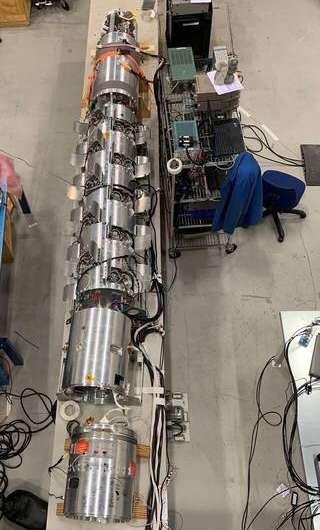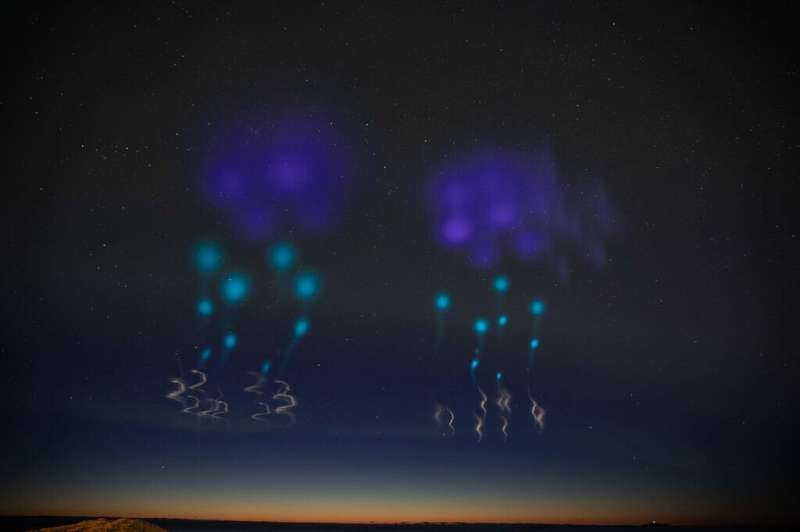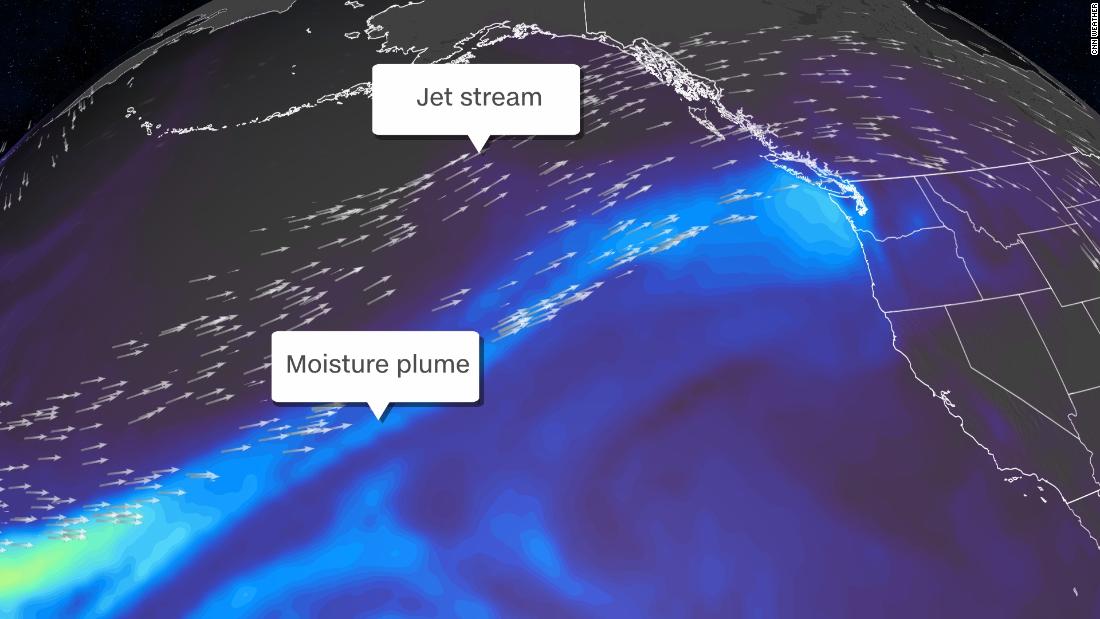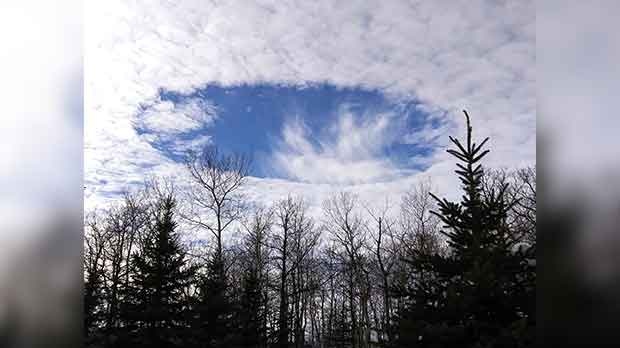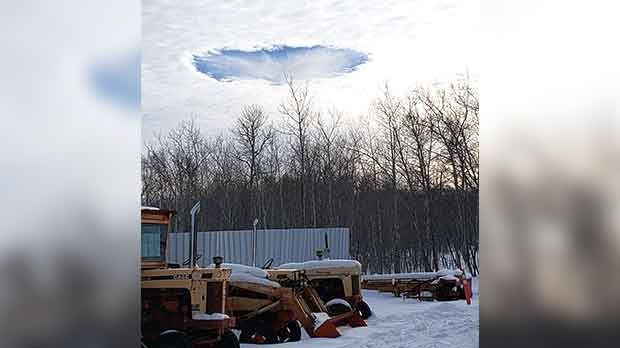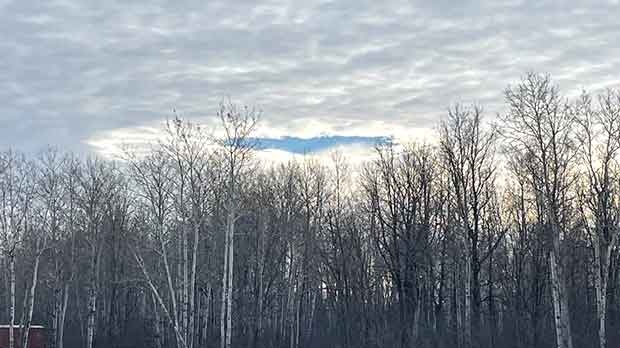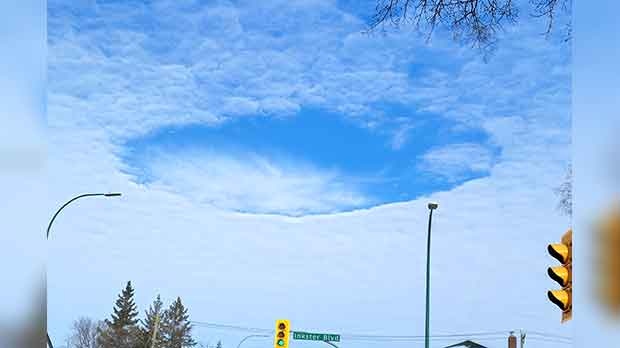
DEPARTING “EXECUTIVE DIRECTOR OF ISSUES MANAGEMENT” MATT WOLF, CENTRE, WILL BE LEAVING JASON KENNEY’S SERVICE NEXT FRIDAY (PHOTO: TWITTER).
Alberta Politics
DAVID CLIMENHAGA
POSTED ON NOVEMBER 27, 2021, 1:45 AM
Alberta Premier Jason Kenney’s personal online troll is moving on.
It can’t be because he was an embarrassment. Matt Wolf’s been an embarrassment as long as he’s worked in Alberta.

Matt Wolf’s most famous tweet, published just before the fourth wave of COVID-19 hit Alberta (Photo: Screenshot of Twitter).
It may be as simple as this: The man whose most famous tweet, penned just before the deadly fourth wave of COVID-19 broke over Alberta – “The pandemic is ending. Accept it.” – has lately become a running joke in Alberta.
For months, opponents of Mr. Kenney’s United Conservative Party Government have taken to calling its large cadre of “issues managers,” press secretaries, and sundry online propagandists The Matts™ after Mr. Wolf.
It seems likely the moniker will survive Mr. Wolf’s tenure in Alberta politics.
Every day that Mr. Wolf stuck around, the harder it would have become for Mr. Kenney to have much hope of persuading anyone he’s really an OK guy, suitable to be trusted with another term as premier.
That the premier’s “executive director of issues management” was paid close to $200,000 a year in base salary and seemed to do precious little other than author nasty, mean-spirited, often genuinely cruel tweets, though not nearly as many of them since the Accept-It debacle, couldn’t have helped.
Harsh social media attacks by Mr. Wolf and other UCP staffers brought a new, highly personal, tone to Alberta politics that some argued bordered on bullying and harassment. “This government openly attacks critics and that’s a shift and I think that’s bad for democracy,” University of Calgary political scientist Melanee Thomas told CTV in 2019 in a story about Mr. Wolf.
That said, to channel the Bard, his efforts were mostly full of sound and fury, signifying nothing.

Mr. Wolf caught peering at opponents of the UCP from the basement of the Legislature Building (Photo: Twitter).
Arguably, though, there would have been no hope at all of fixing the premier’s image problem with Mr. Wolf still literally in the basement of the Alberta Legislature Building in Edmonton, tweeting out a stream of abuse, derision, and gaslighting.
Still, while this is a fair and rational observation about the impact Mr. Wolf had on the Kenney Government, whether that is the actual reason for his departure is speculation.
There were plenty of theories circulating on social media last night, but no one really knows – just yet, anyway.
Was he pushed, did he jump, or has he left for a more generously compensated position doing the same sort of thing for Ontario Conservative Premier Doug Ford’s fast approaching election campaign?
The semi-official story – such as it is, for the moment entirely connected to leaked tidbits on social media, mostly Twitter – is that he quietly gave notice several weeks ago and is leaving on good terms.

Alberta Premier Jason Kenney (Photo: Alberta Newsroom/Flickr).
“Being told by sources he isn’t being shown the door, it’s amicable, and that Wolf is reportedly still a supporter of the Premier and gov,” City TV reporter Saif Kaisar tweeted yesterday afternoon.
A screenshot alleged to be of an internal memo announcing the impending departure said Mr. Wolf “has made the difficult decision to leave the government” and went on to say his “service to Alberta has been essential.” Many would disagree, of course.
“As one of our most respected colleagues, I know he will be greatly missed within the Legislature,” the memo added. The author of these words was not identified.
Mr. Wolf was one of a number of senior political staffers imported from Ontario soon after Mr. Kenney was chosen leader of the UCP in the spring of 2017. Shortly before that happened, 21 Wildrose Party political staffers were given their walking papers.
The new crowd included some who had worked with Mr. Kenney in Ottawa, including Mr. Wolf, who was initially hired as the leader’s deputy chief of staff. Previous to that, he was issues management director for Mr. Kenney’s leadership campaign, War Room director for the UCP campaign, an advisor to the federal Conservative campaign, Sun Media executive producer of programming that included the Ezra Levant Show, and an issues advisor to the Prime Minister’s Office from 2008 to 2010.

Mr. Wolf’s replacement, Tara Jago (Photo: Twitter).
His online resume indicates he was also Vice-President Public Affairs for Hill+Knowlton Strategies for three months in 2019 and War Room advisor to Mr. Ford’s campaign in Ontario for two months in 2018.
As unappealing as was Mr. Wolf’s online persona, it seems unlikely he will have difficulty finding remunerative employment in Conservative politics, where the kind of nasty negativity in which he specialized is highly valued.
It probably means something that word of Mr. Wolfe’s departure was leaked late on a Friday. His last day will be next Friday, Dec. 3.
According to the farewell memo, he will be replaced by Tara Jago, strategic advisor to former agriculture minister Devin Dreeshen and before that issues manager for former health minister Tyler Shandro.
If past performance is a guide, not much is likely to change in the way issues are managed by the premier’s office.






